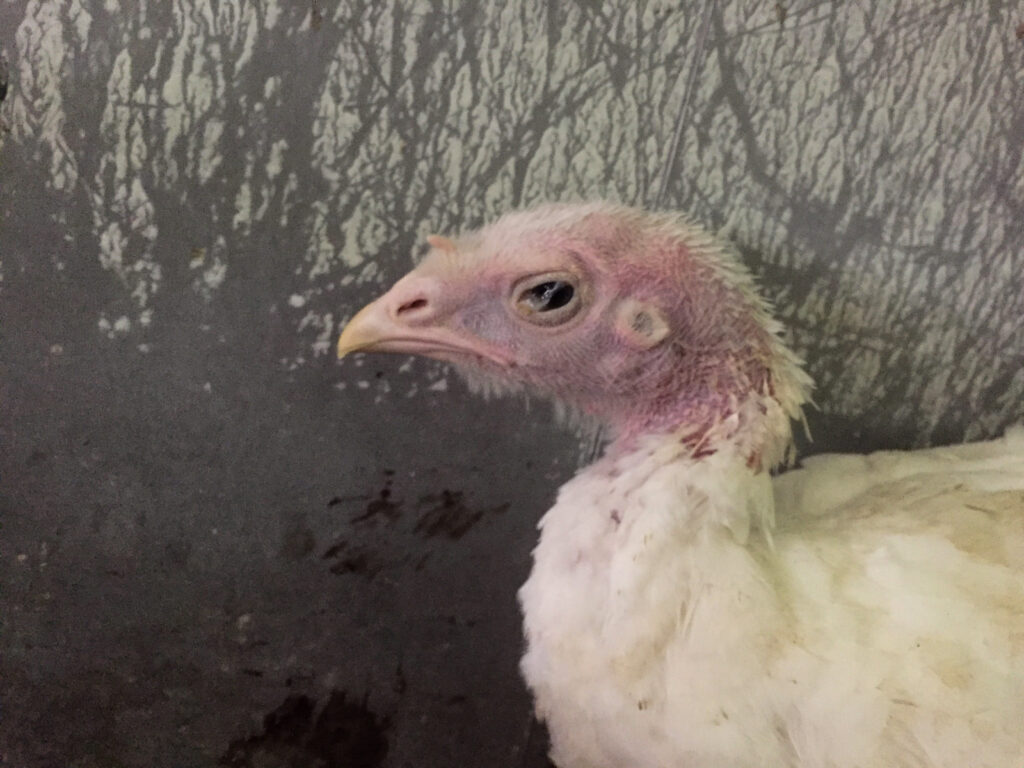By Dr. Jennifer Timmons

Avian Metapneumovirus, or AMPV, is a viral disease that infects the upper respiratory system of poultry. The virus has been detected in turkeys, broilers, layers and breeders. It has also been detected in Muscovy ducks, pheasants and guinea fowl.
The virus was first detected in turkeys in South Africa in 1978. AMPV is also known as Avian Rhinotracheitis, Turkey Rhinotracheitis, Swollen Head Syndrome or Avian Pneumovirus.
There are four subtypes of AMPV (types A, B, C and D). The first infection found in South Africa was caused by a type A virus. In Europe, subsequent infections in turkeys were caused by type B virus. The type C virus infection was found in turkeys in the upper Midwest of the United States from 1997-2000, and type D has thus far only been reported in turkeys in France.
2024 AMPV Outbreaks
The United Egg Producers reported the first U.S. case of AMPV type B in turkeys and broilers in Virginia and North Carolina in January 2024. Other AMPV type B cases have also been reported in Pennsylvania and South Carolina. In addition, a confirmed case of AMPV type A was reported in turkeys in California. This outbreak continues to evolve and there may be additional reported cases after the publication of this fact sheet in May 2024. It should be noted that detection of AMPV in any state is reportable at the federal level to the U.S. Department of Agriculture.
Signs and symptoms of AMPV
Wild birds are natural reservoirs for AMPV, and migratory birds may contribute to spreading the virus. Turkeys, chickens and ducks have been shown to develop clinical signs with different AMPV subtypes. AMPV can affect all age groups of poultry, although infections can be more severe in younger birds. AMPV is mainly an upper respiratory disease that causes inflammation of the nares, sinuses and trachea. Some clinical signs include coughing, swollen heads and nasal discharge. In general, infected birds will appear sick and unthrifty. In hens, coughing may cause the uterus to prolapse and egg production may decrease up to 70%.
Secondary bacterial infections can also occur from AMPV infection and cause a significant increase in flock mortality. Birds without secondary infections may recover in seven to 10 days. However, when birds with secondary infections are under poor management, the disease may persist and bird health may decline due to pneumonia, airsacculitis and pericarditis.
Clinical signs of AMPV look similar to other respiratory diseases, therefore, diagnostic testing is required for diagnosis. Polymerase chain reaction and serology enzyme-linked immunosorbent assay (ELISA) are commonly used to diagnose AMPV. There is no treatment for AMPV. However, early diagnosis and treatment of secondary infections would be beneficial to reduce the negative effects of any bacterial infection. Currently there is no available commercial AMPV vaccine approved for use in the United States.
Control and Prevention of AMPV
Following strict biosecurity measures on your farm is the best defense against AMPV and other poultry diseases. Early detection is the best defense against spreading disease. Continuing to monitor flock health and notifying your flock adviser if flock mortality increases so diagnostic tests can be performed is key for early detection.
Maryland residents who have questions about bird health and AMPV should contact one of the Maryland State Department of Agriculture Animal Health Laboratories at 410-543-6610 or 301-600-1548.
References
- Paramyxoviridae and Pneumoviridae (2017). In N.J. MacLachlan & E.J. Dubovi (Eds.), Fenner’s Veterinary Virology (5th ed., pp. 327-356). Academic Press, ISBN 9780128009468 https://doi.org/10.1016/B978-0-12-800946-8.00017-9
- Rautenschlein, S. (2022). Avian Metapneumovirus. In Merck Manual Professional Version. Merck & Co., Inc. Retrieved March 12, 2024, from https://www.merckvetmanual.com/poultry/avianmetapneumovirus/avian-metapneumovirus
Contact
Dr. Jennifer Timmons, associate professor of poultry science at the University of Maryland Eastern Shore, at jtimmons1@umes.edu.
This work was supported in part by the U.S. Department of Agriculture, National Institute of Food and Agriculture, and in partnership with the Maryland Legislature

